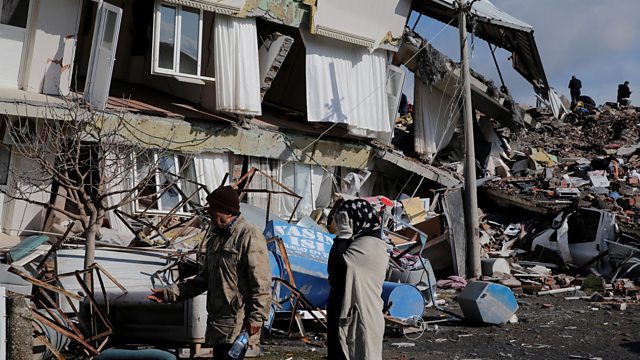Turkey-Syria earthquake
Research in 2016 predicted an earthquake of this magnitude, but the region seems to have been caught off-guard.
In the early hours of Monday, a powerful earthquake hit Kahramanmaras in Turkey. Nine hours later another struck. When this edition of Science in Action first aired, 19,000 people were reported to have died, but that number was expected to rise.
Back in 2016, Professor Asli Garagon and her colleagues accurately predicted that an earthquake of this size was coming. Using GPS, they were monitoring the East Anatolian fault to calculate energy building between the plates. With such accurate insight could Turkey have been better prepared?
Ross Stein, seismologist and founder of Temblor, a Californian consultancy that specialises in assessing hazard risk, estimates the plates moved at 5,000 mph. The movement of the plates may have built up pressure in other parts of the country.
And finally, Tiziana Rossetto, a civil engineer at University College London, knows better than most that earthquakes do not kill, buildings do. She tells Roland how the combination of earthquakes and subsequent aftershocks appear to have even destroyed buildings that were purposely built to withstand them.
Presenter: Roland Pease
Producer: Harrison Lewis
Assistant producer: Sophie Ormiston
Image: Aftermath of the deadly earthquake in Gaziantep
Credit: REUTERS/Dilara Senkaya
Last on
More episodes
Previous
Next
Broadcasts
- Thu 9 Feb 2023 20:32GMT大象传媒 World Service Online, Americas and the Caribbean, UK DAB/Freeview & Europe and the Middle East only
- Thu 9 Feb 2023 21:32GMT大象传媒 World Service Australasia, South Asia, News Internet & East Asia only
- Fri 10 Feb 2023 04:32GMT大象传媒 World Service Australasia, Americas and the Caribbean, South Asia & East Asia only
- Fri 10 Feb 2023 13:32GMT大象传媒 World Service
- Fri 10 Feb 2023 18:32GMT大象传媒 World Service East and Southern Africa & West and Central Africa only
- Sat 11 Feb 2023 17:32GMT大象传媒 World Service News Internet
Podcast
-
![]()
Science In Action
The 大象传媒 brings you all the week's science news.


